It's no secret that tulle gives windows a special aesthetic appeal. In the material of this article we will tell you which varieties of tulle curtains are now in fashion, as well as dwell on the nuances of choosing the best option, taking into account the stylistic decision of a particular hall.

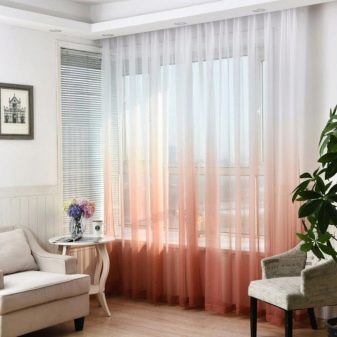
Fashion trends
Every year, at the exhibition events of interior business, the trends of fashionable housing are updated. This season, tulle has not lost its popularity, but some types of matter began to be considered irrelevant. For example, stylists felt that the time of a plain veil and organza was gone. Organza, on the other hand, received a red card also because trends today began to strive for eco-friendly styling.
A smooth veil will gradually fade from the windows of fashion boutiques. Designers believe that in its external characteristics and expressiveness it is significantly inferior to texture materials. According to their assessment, she lacks elegance and a certain drama, she is too predictable, does not have a "character."

Given the minimalist furniture, tulle needs additions that catch the eye. Tulle curtains, something similar to the most delicate Chinese silk, will become relevant. It is important that they are weightless, have characteristic overflows, the chameleon effect, which implies a change in color and glare, depending on the change in angle and lighting.
The change in shade is explained by crepe weaving of textile threads.Such a tulle allows you to create voluminous and deep folds, forming brutality or romance, based on the choice of a specific material. Stylish textiles with an uneven thread of warp are in fashion: it forms the effect of a shower or sparks. In addition, knotted fabric, which previously did not seem to stylists something special, is gaining popularity. Today, such a tulle is in demand in ethnic style, it combines rustic and naturalness into a single whole.


In addition to these materials, textile with sparse plain weave was also in the spotlight. Outwardly, it is somewhat similar to flax, characterized by a certain unevenness in the texture of the threads. It looks both rude and voluminous at the same time. Translucent imitation of flax successfully fits into the style of not only modern interior design, but also in vintage and environmental branches of the interior.
In the new season are becoming popular colors in the form of damask patterns and oriental exoticism. This is a combination of rustic textures and luxury, monograms, stripes, lattices on a translucent background. Today, the country style intends to subjugate the palace decor. As for the prints on the grid, then “flies”, as on the caprons, and rhombuses can be scattered on it.


If we talk about the veil, which was liked by stylists, then this is a material with mixing smooth and structured fibers. Fashion is fashionable matter with knots, thickening of threads and a slight terry.
Among other types of tulle, flickering fabrics are worth noting. The fashionable directions of the new season are the following:
- embroidery on a grid in the form of small bouquets, geometric ornament or large flowers;


- fibers with a light reflecting effect woven into the fabric;


- the presence at the bottom of the cloth weighting braid or embroidery;


- use for weighting tulle and static beads, rhinestones, sequins;
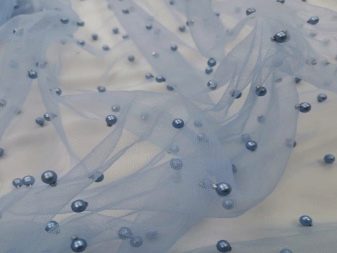

- the presence of festoons on the lower edge of the tulle curtains;
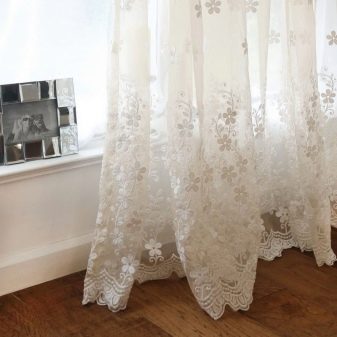
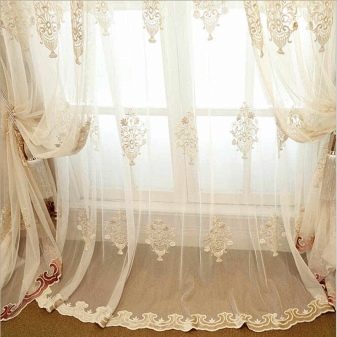
- a combination of smooth tulle with velvet or other dense textiles;


- the absence of other curtains when choosing a tulle net;


- the rule of the pattern in combined models (if it is on the tulle, additional curtains should be plain).


The new rule is the right choice of components: tulle is not taken without taking into account the main curtains. For example, today it is customary to take silk tulle for heavy curtains. For lightweight fabrics with a traditional weave, options in the form of a grid, matched to the tone, are suitable.
Curtains with tulle can be selected in the form of an ensemble. If a damask ornament is applied to the tulle curtains, there should not be a pattern on the curtains. In this case, the dominant curtain design is precisely the tulle. These models should be used in the living room without any other panels, because they will simplify the interior design. Different types of matter and texture make it possible to introduce into the interior composition not only romance, but also frivolity, a touch of vintage, and severity.


Varieties
Tulle curtains for the living room can be varied. For example, products can be classified according to the method of production: matter can be smooth and patterned. By the type of yarn used, the fabrics are woven from threads of natural and synthetic origin. In addition, in order to improve the quality and performance characteristics, tulle is also made from mixed fibers.
The length of the product is classified into 4 categories: short to the windowsill, just below the windowsill, classic, to the floor and creeping on the floor. In width they are narrow or solid. At the same time, one panel can cover both one or several windows of the living room (up to panoramic ones).

Besides, Variations can be designed for regular and bay windows.. Products of the second type differ in fixing methods: the curtain rod for such windows can be solid or composite, including several elements with gaps between them, on which the curtains are not hung.By the type of fastening, the models can be standard and hidden, their clamps can be eyelets, hinges, and also a curtain tape. The shape can be either traditionally rectangular or arched, asymmetrically-diagonal.
An arch made of tulle is considered a very interesting technique for decorating the hall windows. By the type of cut, models can vary from the simplest to the most ornate.


Despite the fact that today it is customary to strive for conciseness and functionality, modern design ideas are limited only to the vision of style. For example, according to the type of cut, the tulle can be as follows:
- classic rectangular canvas;

- Austrian curtains with draped hem;

- French draped curtains with different numbers of festivals;

- London curtains with their inherent high status;
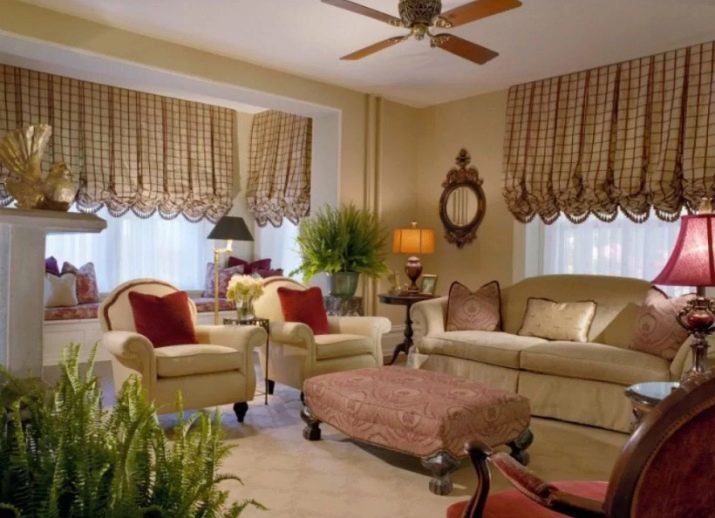
- Roman, gathering in the same folds;
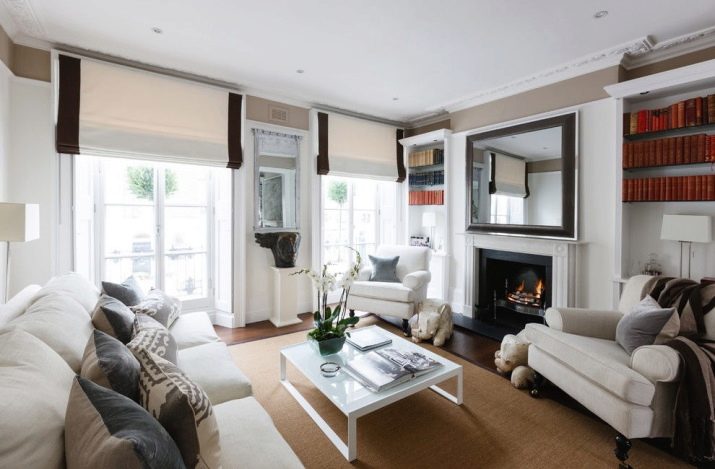
- pleated, gathering accordion;

- with a lambrequin of soft or hard type;

- Japanese panels from special textiles with weighting.

By type of design, the canvases can be concise and decorated with a wide variety of decor. The print is also different: embossed, embroidered, sewn. Matter can be classic, reaped, pleated. It can be a grid, a cobweb, a muslin, lace, a rain. The decoration of individual varieties is photo printing.

What are the fabrics?
Tulle to the hall is made from a variety of raw materials. In modern production, cotton, silk, linen, viscose yarns, as well as polyester, polyamide and nylon are often used. The combination of natural and synthetic fibers allows you to get textiles that are resistant to ultraviolet radiation, creasing, deformation after washing or cleaning.


The most popular materials for making tulle today are: chiffon, mesh, muslin, viscose, cotton, tulle, nylon. Natural materials are valued for environmental friendliness, they look great in the interior design of the living room of different styles. Unlike synthetic fabrics, they do not have similar strength. Such materials often shrink after washing.


In contrast to them, synthetics are not so demanding in operationand. Often, such curtains are not only cheaper, but also more durable. They do not fade under the sun, it is easier to iron, they are not deformed in the washing machine. Some of them (for example, a reaper) do not need to be ironed at all. Small folds form at the stage of formation of the panel itself.

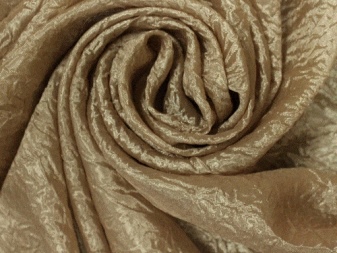
Dimensions
The parameters of a particular tulle depend on the size of the windows of a particular living room. Besides, the length and width of the panel obeys the curtain design. For example, if the model provides for the formation of a fold, the width of the tulle fabric may be 2 or even 3 widths of the window opening. If the task of tulle is to visually increase the window opening or the width of the walls, its width may equal the width of the wall plus the allowance for the formation of the fold.


Without soft folds, tulle cannot: with their help, it creates the effect of ennoblement of space. If the fabric is stretched without folds, it seems that it was simply not enough to equip the interior of a particular hall or living room.
Depending on the dimensions of the windows and cornices, the height can be 260, 280, 150 mm. The length of the curtains can end 1 cm above the windowsill (not reaching its upper plane), 1.5–3 cm above floor level. There are curtain options just below the windowsill, which are usually selected so that they do not exceed the entrance by 10-15 cm.


Both those and other tulle curtains are considered short. If the cornice has stops, the width of the tulle is selected based on this nuance. Sometimes, buyers do the calculations altogether, counting the number of folds and the distance between them. For example, they can be from 7 or more, the distance can be from 19 to 30 cm. I don’t feel like eating the folds, approximate width is selected, doubling the width along the length of the cornice to the limiters.
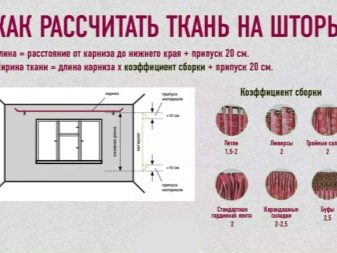

The average width is 4–5 m. The width of individual varieties can reach up to 7.5 m. If the living room is located in a two-level house or apartment and has huge panoramic windows, measure the length from the height of the cornice to the desired level. Usually, these curtains are sewn to order, they are mostly simple and rectangular, can be solid or paired, which depends on the preferences of the homeowners. The build factor is usually two.


Color spectrum
The trends of the new season suggest turning to tonal combinations. For example, if the tulle complements the main curtains, its color may be related to the shade of the selected curtains. In addition, he can repeat the color of the contours of the picture on the curtains. As for the best color combinations, despite the fact that white has not lost its relevance, related contrasts are a priority.

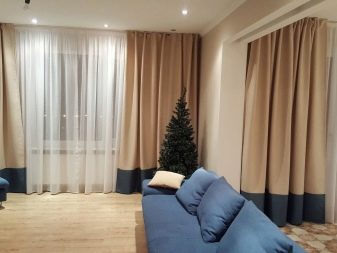
Therefore, even white can give the desired halftone. For example, a warm-white tone of a tulle is suitable for beige curtains, snowy for bluish, and almost whitened red for wine. The focus is on models in ombre colors, which are a smooth flow of color from one to another. Translucent white curtains with blue, blue, silver stripes look beautiful. Popular models with a grayish base and a contrasting pattern for it.
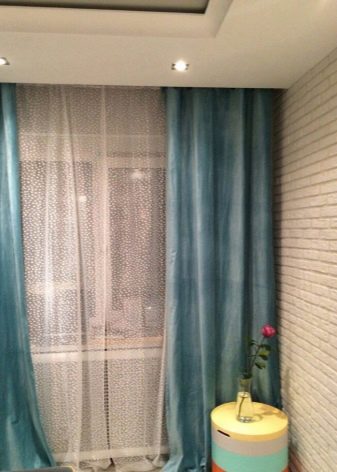

Fashionable shades of tulle this season are considered blue, beige, gray tones. Notable colors combining lilac and gold shades, burgundy and bronze, white and bronze, silver and white, white and gold, milk. The pattern on the fabric can be either a color contrast, or made in the same shade as the canvas itself. It can stand out against the background of the base due to density (a denser pattern on a translucent background).
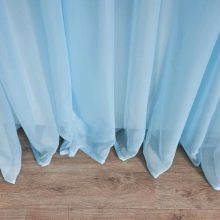


How to choose?
Having become acquainted with fashion trends and new colors of tulle in the living room, the question of choice arises. And if on the shelves of shops a lot of options are offered, in their huge assortment it is easy to get confused. To buy not just the most beautiful and stylish curtains, you need to consider a number of nuances. For example, initially it is necessary to determine the size and shape of the curtains, for which it will be necessary to measure the eaves, as well as window openings with frames.
It is important to understand: will these curtains be an independent element of design or a complement to curtains. If they are the basis of the curtain composition, you can select options with a pattern, embroidery, decor, which will favorably emphasize the interior, indicating belonging to a particular style.


However, it’s immediately worth considering such a moment as the location of the furniture near the windows. For example, if a sofa or other upholstered furniture is located right at the window, models that creep on the floor can create a problem when trying to open the windows for ventilation. You can stumble on long curtains, they can cause a fall in households or guests. At the same time, short curtains in a spacious room can look lonely, as if when creating the interior the owners did not have enough money to buy fabric and had to confine themselves to canvases with a short length.

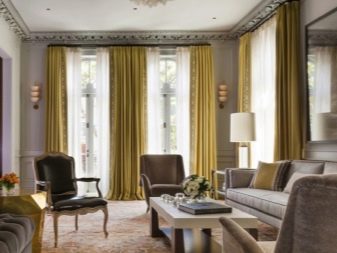
However, in this case there may be exceptions. For example, tulle curtains of French or Austrian style cut just below the windowsill on the windows will look pretty good. As for the choice of color, it is selected based on the background solution of the interior of a particular living room. According to the generally accepted rule of four shades, it must be related to one of them. Excessive diversity is unacceptable: it simplifies the interior, makes it boring and inexpressive.


The style of the curtains must match the style of a particular hall. When choosing the right color, you need to start from the degree of illumination of the room. The lighter the room, the brighter the background of the tulle or the color of its pattern.
If the room has several windows, often you have to order curtains individually. In this case, you need to take matter from one roll, since different shades can be observed in different ones. If you want to buy a set of ready-made curtains, it is necessary to pay attention to the batch number (it must be single).

For some, practicality is important, so you can not discount the type of weaving of threads. Despite the fact that different thicknesses of fibers give the texture of tulle originality, not every type of fabric will withstand long-term operation. In pursuit of fashion trends, some manufacturers do not pay special attention to the quality of the weave of the fibers. Sometimes sparse weaving with random mechanical grazing leads to a violation of the integrity of the texture: hooks appear, sometimes threads are pulled from the fabric.


If it is decided to hang the tulle with adjacent furniture, you will not be able to avoid touching. Therefore, preference should be given to options with a denser weave. Such textiles are not tamped after washing, it is less prone to warp on the basis and weft. Sometimes the decision is to revise the length: the buyer takes an option that will not cling to furniture when ventilating the room, will not interfere with the operation of the hall.


Besides the fact that the fabric for the tulle should be practical, it is necessary to take into account specific tones that are relevant in a particular style. For example, nothing will enhance the hall’s status as light shades of the color palette. Pastel or whitened gamma is considered special: for a long time light colors were considered a privilege of the nobility. Tulle curtains in beige, milk tones decorate the living room windows and give it lightness.


It is important not to forget about the level of illumination of a particular room.
If it initially seems uncomfortable, and even covered with dark wallpaper, you will have to “draw out” the lack of lighting with the right textiles. In addition to having to give up bright colors, It is important to choose light and translucent matter that will look right in the interior of the room. For example, for color balance in a cold room you will have to pick up light tulle curtains in warm colors.


You can not discount the compatibility of tulle with the elements of arrangement. It will look more harmonious in the living room if, for example, its print is repeated in the colors of sofa cushions, furniture upholstery, its removable covers, and accent wall decoration. The canvas can be combined with furniture elements with the background color, pattern, embroidery, decor. In addition, decor can be repeated (say, about the same edging on covers, pillows and tulle).

Use in different styles
The style of the interior decides a lot: often it is the curtains that become its expressive accents, decoration, completion of the interior composition. At the same time, the resources of styles can vary radically.
- For style minimalism it is common to choose canvases of a continuous type without any decor. As a rule, these are laconic rectangular tulle curtains without a pattern. Their main task is to hide the window from the penetration of sunlight. There should not be complex elements, folds, draperies: all this is superfluous, not peculiar to this style. Tulle can be synthetic or mixed, matte or with a silky sheen. Eyelets can become its best decor.


- Classic style Design is distinguished by pretentiousness and craving for special solemnity. Ideal for decorating the living room windows with the classic, neoclassical and classicist styles will be paintings decorated with velvet lambrequin. Draperies of dense matter can be diverse: symmetrical or asymmetric, decorated with swag, peroxides of different sizes. Tulle to velvet lambrequin can be patterned. For example, the basis of the pattern may be monograms, the bottom of the tulle - embroidered.However, when choosing a curtain composition, it is necessary to choose the right hooks.
If there are too many decorations, the material will not look expressive. It is especially important to consider this in the living room, whose useful area is limited. You need to create a curtain design in a classic style where there is room for this. Otherwise, part of the wall with the curtains will appear disproportionately massive.
If desired, it is possible to use not elastic velvet as a curtain companion, but thinner material glued with non-woven fabric. Today it is fashionable to supplement tulle with a lambrequin with a curly edge or perforation.




- Linen tulle curtains look great in some ethnic styles.. However, if the versions of the Austrian, French and London types are suitable for classical styles, then it is more appropriate to use concise square-shaped panels. In the interior of the living room of the Arabic style or Baroque, you can also indicate belonging to the style through products of Austrian or French cut.


- As for the eastern branches of design, everything will depend on the specific type of style. For example, Chinese implies the use of natural textiles, simplicity of form, models without folds and folds. Here you do not need fastenings on the eyelets, you can hang the curtains on a hidden ledge, both to the wall and to the ceiling.


- Country and Provence are distinguished by a certain rustic identity. Tulle curtains of these design directions should visually immerse the layman in the atmosphere of the old era. Given that there was no technological decor before, textile loops or drawstring can become fasteners.


How to hang?
There are many ways to design a living room window with tulle. Tulle on the windows of the living room can be solid single, symmetrical paired, unpaired. Design varies depending on the skill and sense of style of the designer. For example, someone believes that it is enough to hang the curtains on the grommets - and this is true, it looks stylish and spectacular.

In other cases, stylists decorate the hall windows with whole compositions. In this case, the canvases can be double and even multilayer. You can order a soft pelmet from elastic textile for the tulle and throw it several times through the cornice. You can collect translucent curtains into festoons by stitching ropes in them, or even a special rubber thread.

You can hang the curtains stationary, while they will not imply the opening or closing. In this case, to give the desired shape, you can use various mounts and pickups. If the windows of the living room are located in the attic, it will be possible to fix across the window frames of the bar. She will keep hanging matter, not allowing her to spoil the appearance of the interior due to the tilt of the windows, which are located, in fact, on the roof.


You can fix weightless curtains on a special Velcro, hiding it under the plasterboard ceiling box. You can hang paired tulle curtains and crosswise. They also hang the tulle, forming draperies with the help of hooks. In addition, you can alternate panels by buying companions plain and with a pattern.
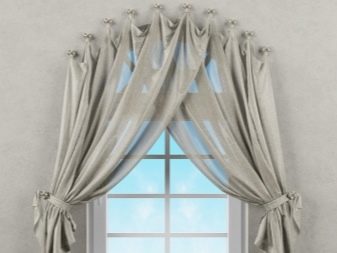

Good examples
- Decoration of the living room windows with classic tulle.
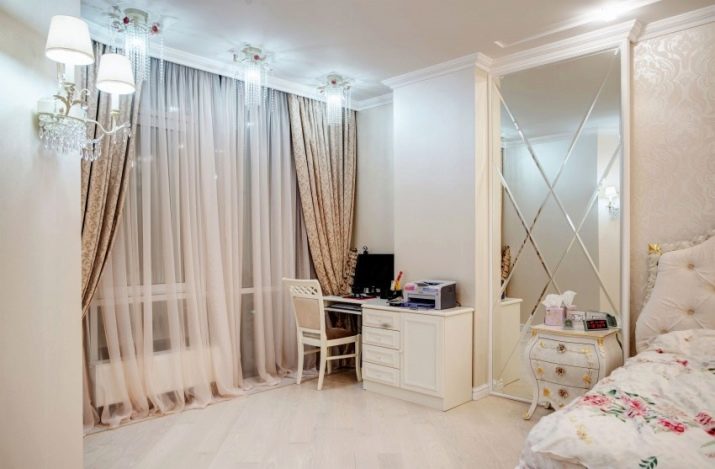
- The embodiment of minimalist style in a modern style.

- Combination of light tulle with dense pelmet.

- Decoration of the Provencal living room with transparent curtains.

- An example of emphasizing the space of a room with short curtains.

- Involving tulle as a stylish accent of the interior of the hall.

- A modern approach to the design of living room windows with tulle.

- An extraordinary decision in choosing a cut of transparent curtains.

- Air tulle brings lightness and aesthetics to the interior.

- Tulle curtains, as the completion of the interior composition of the hall.

See how to choose curtains, what size, color and style they should be in the next video.










